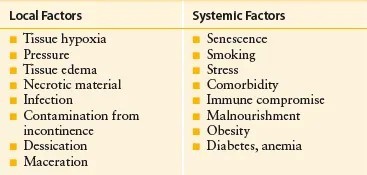A 7-year-old female child admitted to pre-op for scheduled surgery. Focused assessment completed. Lung sounds are clear to auscultation (CTA), heart sounds clear with normal sinus rhythm, skin clear with no breakdown.
- Abdomen soft with bowel sounds heard in all 4 quadrants.
- A feeding tube is present on the abdomen
- Site is clean and clear.
- Consents for surgery signed by parent at preadmission visit.
- Peripheral IV (PIV) 22 gauge inserted in right forearm with assistance from another nurse.
- Cried throughout procedure.
- Comforted by parent and use of touch music.
- IV fluids at 75 mL/hr started.
Client transported to operating room (OR) and The nurse is developing the plan of care for the child. To provide atraumatic care for this child post-operatively, what will be the priority?
Pain assessments
Antibiotics
Occupational therapy
Wound care
Physical therapy
The Correct Answer is A
Assessing and managing pain is a crucial aspect of providing atraumatic care for any post-operative patient, including a child. The child cried throughout the procedure and will likely experience discomfort and pain after the surgery. It is important to assess the child's pain levels regularly using appropriate pain assessment tools and provide appropriate pain management interventions to ensure their comfort and well-being.
While antibiotics may be prescribed if there is a surgical site infection or specific indications for their use, it is not mentioned as a priority in this scenario. The focus is on providing atraumatic care post-operatively, and pain assessment takes precedence.
Occupational therapy, physical therapy, and wound care are important components of the child's overall care, but they may not be the immediate priority post-operatively.
These interventions can be incorporated into the plan of care as needed, but addressing pain is of utmost importance in the immediate post-operative period.
Nursing Test Bank
Naxlex Comprehensive Predictor Exams
Related Questions
Correct Answer is ["B","D"]
Explanation
The age-related factors that may factor into this client's wound healing are: Decreased epidermal turnover: As people age, the turnover of skin cells decreases, resulting in slower wound healing. This can prolong the healing process and increase the risk of complications.
T-cell function decrease: The immune system's function, including T-cell function, tends to decline with age. T-cells play a crucial role in the immune response and wound healing. Decreased T-cell function can impair the body's ability to fight infection and promote efficient healing.
Insulin resistance and pigmentation changes are not directly age-related factors that impact wound healing. Insulin resistance is a condition related to impaired glucose metabolism and can affect wound healing in individuals with diabetes or other metabolic disorders, but it is not necessarily an age-related factor. Pigmentation changes are primarily cosmetic and do not directly affect the physiological processes involved in wound healing.

Correct Answer is B
Explanation
The client's labs indicate that she has a positive result for group B Streptococcus (GBS) and hepatitis surface antigen, and she is also identified as rubella non-immune.
Ampicillin is the recommended antibiotic for intrapartum prophylaxis against GBS infection to reduce the risk of transmission to the newborn. Administering ampicillin intravenously would help protect the newborn from potential GBS-related complications. Transfusion of packed red blood cells is not indicated based on the hemoglobin and hematocrit values provided. The client's hemoglobin and hematocrit levels, although lower than the reference range, are not critically low and do not necessarily require a blood transfusion.
Injecting hepatitis B immune globulin is not the appropriate intervention in this case. The client is positive for hepatitis surface antigen, indicating active infection, and requires appropriate medical management, which may include antiviral treatment.
Administering the measles, mumps, rubella vaccine is contraindicated during pregnancy. Vaccination for rubella is typically recommended prior to conception or postpartum to prevent congenital rubella syndrome.
Whether you are a student looking to ace your exams or a practicing nurse seeking to enhance your expertise , our nursing education contents will empower you with the confidence and competence to make a difference in the lives of patients and become a respected leader in the healthcare field.
Visit Naxlex, invest in your future and unlock endless possibilities with our unparalleled nursing education contents today
Report Wrong Answer on the Current Question
Do you disagree with the answer? If yes, what is your expected answer? Explain.
Kindly be descriptive with the issue you are facing.
